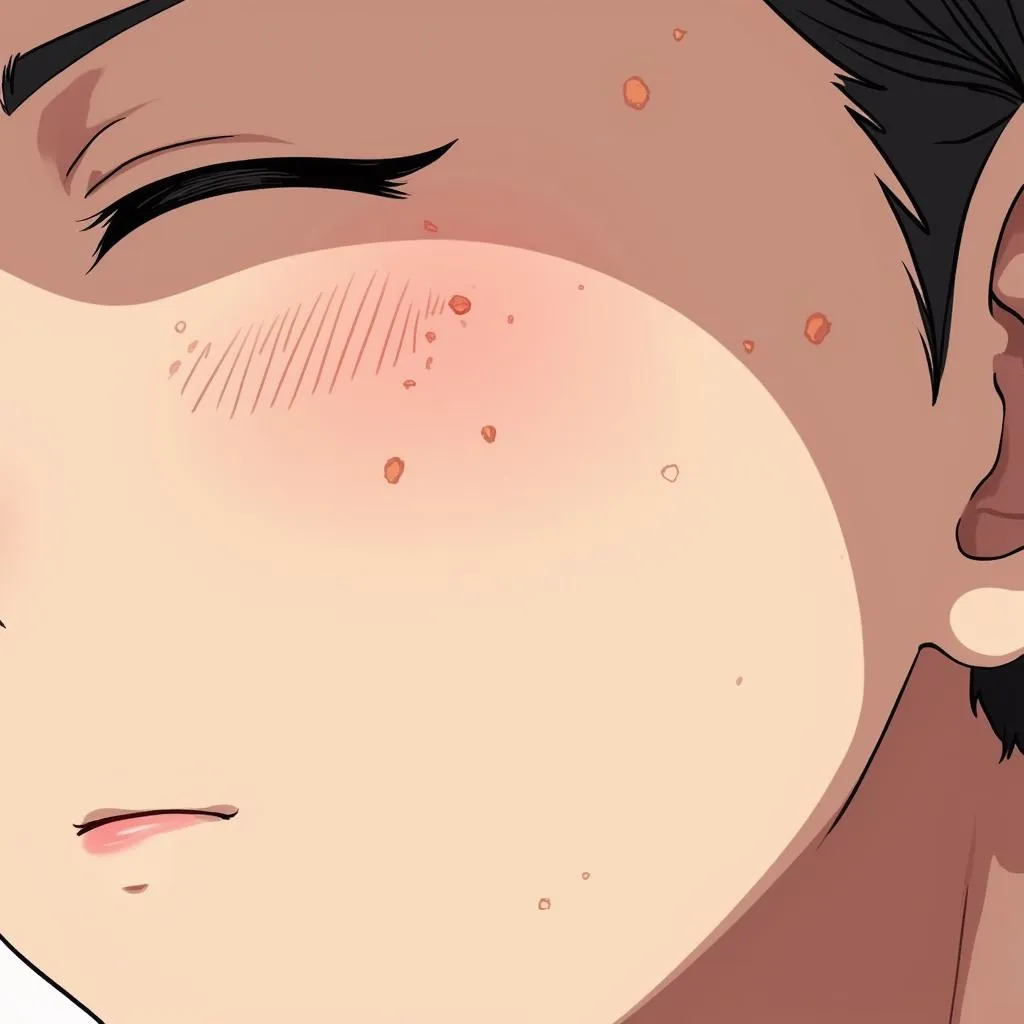Anime skin coloring can seem deceptively simple, but achieving that vibrant and lifelike look requires a keen eye and a good grasp of color theory. Whether you’re a complete beginner or looking to refine your skills, this guide will equip you with the knowledge and techniques to bring your anime characters to life. From understanding different skin tones to mastering highlights and shadows, we’ll delve into the intricacies of how to color anime skin like a true artist.
Understanding Skin Tones: It’s More Than Just Peach
Many budding artists make the mistake of reaching for a single shade of peach or tan when it comes to anime skin. However, the beauty of skin lies in its subtle variations and undertones. To create realistic and visually appealing characters, consider the following:
- Diversity is key: Anime characters come in all shades, from porcelain white to deep ebony. Embrace this diversity by exploring a wide range of hues and saturations.
- Undertones matter: Just like in real life, anime skin can have warm, cool, or neutral undertones. Warm undertones lean towards yellow and orange, cool undertones have hints of pink and blue, while neutral undertones fall somewhere in between.
- Lighting influences color: The lighting in your scene will dramatically affect how skin tones appear. Pay attention to how light sources interact with the skin, creating shadows, highlights, and color shifts.
Essential Tools for Coloring Anime Skin
Before we dive into the step-by-step process, let’s gather the essential tools for the job:
- Digital art software: Programs like Clip Studio Paint, Adobe Photoshop, and Procreate offer a wide array of brushes and color mixing options.
- Drawing tablet: A graphics tablet provides greater precision and control compared to a mouse, allowing for smoother lines and more natural-looking blending.
- Color palettes: Pre-made color palettes can be a great starting point, especially when experimenting with different skin tones and undertones.
 Anime skin color palettes
Anime skin color palettes
Step-by-Step Guide to Coloring Anime Skin
Now that you have a good understanding of skin tones and the necessary tools, let’s walk through the process of coloring anime skin step-by-step:
- Start with a clean line art: Ensure your line art is clean and well-defined. This will make the coloring process much smoother and prevent colors from bleeding into unwanted areas.
- Lay down the base color: Choose a base color that reflects the character’s overall skin tone. Remember to consider their ethnicity, age, and the lighting in your scene.
- Add shadows: Using a darker shade of your base color, start defining the shadows. Focus on areas where light is blocked, such as under the hair, chin, and neck.
- Apply blush and highlights: To add dimension and life to the skin, introduce blush to areas like the cheeks, nose, and ears. Then, use a lighter shade to create highlights on the areas where light hits directly, like the forehead, bridge of the nose, and chin.
- Blend, blend, blend: This is crucial for achieving a smooth and natural look. Use a blending tool or a soft brush to seamlessly blend the shadows, blush, and highlights into the base color.
 Step-by-step anime skin coloring process
Step-by-step anime skin coloring process
Advanced Tips for Realistic Anime Skin
Take your anime skin coloring to the next level with these advanced techniques:
- Layer colors gradually: Instead of applying shadows and highlights in one go, build up the colors gradually using multiple layers. This creates a more subtle and realistic effect.
- Experiment with different blending modes: Explore the different blending modes offered by your digital art software. Modes like Multiply, Overlay, and Soft Light can add depth and vibrancy to your colors.
- Don’t be afraid of imperfections: Real skin has pores, freckles, and other minor imperfections. Adding these subtle details can make your characters look more natural and relatable.
 Close-up of anime skin details
Close-up of anime skin details
Conclusion: Mastering the Art of Anime Skin Coloring
Coloring anime skin is a journey of continuous learning and experimentation. By understanding the nuances of skin tones, mastering basic and advanced techniques, and embracing your own artistic style, you can create characters that truly come to life. Remember, practice makes perfect, so keep experimenting, have fun, and let your creativity flow!
FAQs
Q: What are some common mistakes to avoid when coloring anime skin?
A: Some common mistakes include using a single, flat color, neglecting undertones, applying too much blush, and overdoing highlights.
Q: Can I use traditional art supplies to color anime skin?
A: Absolutely! Traditional media like colored pencils, markers, and watercolors can achieve beautiful results. The techniques are similar, but you’ll need to adapt them to your chosen medium.
Need Help With Your Anime Art?
Contact us at 0373298888 or email us at [email protected]. Our team of art enthusiasts is here to assist you 24/7. You can also visit us at 86 Cầu Giấy, Hà Nội.

